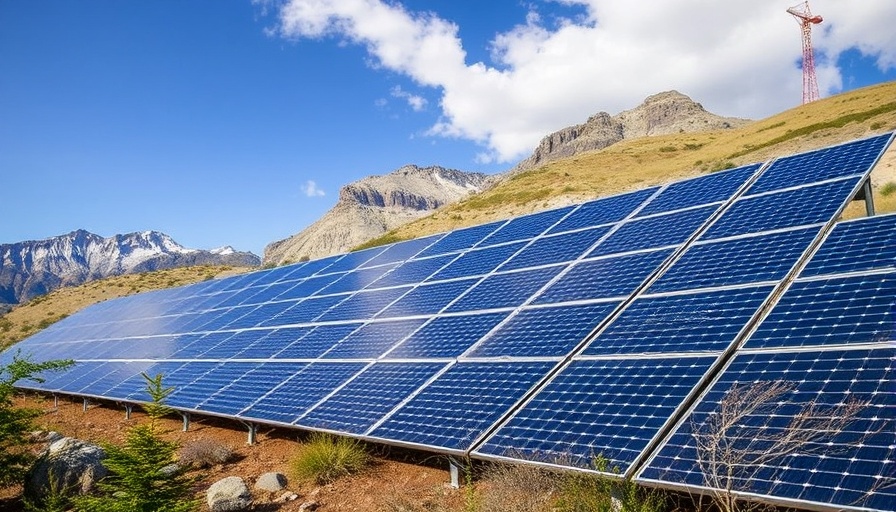
Maximizing Your Solar Energy: Understanding Real-World Performance and Efficiency
Solar energy continues to be one of the fastest-growing renewable energy sources worldwide. While it's well-known that solar panels can indeed generate energy, many people are unaware of how much energy they can produce beyond their peak metrics. Understanding this concept is essential for homeowners looking to maximize their investment in solar technology.
What Does Panel Efficiency Really Mean?
Solar panel efficiency measures how much sunlight is converted into usable electricity. When we discuss efficiency in solar energy, numbers typically range from 18% to 24% for household panels. Higher efficiency means more energy production in a given space, which is a crucial consideration for both household owners and eco-conscious business users.
In standard test conditions, a solar panel rated at 20% efficiency converts 20% of sunlight into electricity. However, home conditions vary significantly due to factors such as weather, panel orientation, and local geography, all of which impact the real-world output of solar energy systems.
Real-World Performance: More Than the Peak
When assessing solar panel production, it's critical to know that they generate energy throughout the day, not just at peak sunlight. Despite what many might assume, solar panels can produce energy on cloudy days simply by capturing daylight. This revelation is heartening for homeowners concerned about inconsistent sunny weather patterns, as they can still leverage solar technology effectively.
Recent studies show that residential solar panels continue to generate significant electricity in non-ideal conditions—this means owners can still benefit from reduced energy costs even during less-than-sunny seasons.
Factors Influencing Solar Energy Production
The real-world performance of solar panels is influenced by numerous elements:
- Orientation and Tilt: Ideally, panels should face south in the Northern Hemisphere for maximum exposure to sunlight. Adjusting the angle according to latitude also plays a significant role in effectiveness.
- Weather Conditions: Solar panels can generate electricity in varied climatic conditions, but cloudy, rainy days may lower output compared to clear, sunny skies.
- Nearby Obstructions: Trees, buildings, and even chimneys can create shade, significantly affecting panel performance. Hence, strategic placement is crucial.
- Panel Quality: Different panels offer various efficiencies: mono-crystalline panels tend to perform better than their polycrystalline counterparts.
Technological Innovations Improving Efficiency
Advancements in technology mean that solar panels are only getting better. Innovations such as bifacial panels, which can absorb light from both sides, and PERC technology enhance the ability of panels to capture sunlight, even in less-than-ideal conditions. These advancements could lead to efficiency rates surpassing 25% in the near future.
Making the Investment in Solar
Understanding the potential performance of solar panels can reward homeowners and businesses with significant savings on energy costs. The longevity of solar panels, usually around 25 years with minimal maintenance, means years of reduced expenses post-installation.
Evaluating your energy needs, roof space, and choosing high-quality panels with solid warrants is crucial to making the most of your investment. For instance, panel warranties often promise that performance will still be at 80% efficiency after 20 years, ensuring continued savings.
Conclusion: Take the Leap with Solar Energy
Investing in solar energy is a crucial step towards financial savings and environmental responsibility. By understanding solar panel performance beyond mere statistics, homeowners can approach solar installations with confidence and make informed decisions that benefit both their wallets and the planet.
If you are considering making the switch to solar, explore available options and consult with energy experts to tailor solutions that meet your exact requirements.
 Add Row
Add Row  Add
Add 



Write A Comment